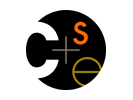
CSE 451

Winter 2008
Project 0: C Programming warm-up
INFORMATION
Out: 1/7/08
Due: 1/16/08 electronically @ 10:00 a.m.
This project is done individually. Start early.
You will need this skeleton code to get started.
BACKGROUND
Despite incredible advances in programming languages over the last 30
years, most serious systems programming is still done in C.
Why is this? Because C gives the programmer more control and power over
the code's execution than do other, higher-level languages like Java
or even C++. Also, C typically has less runtime overhead than higher-level
languages, which can translate into increased performance. Suppose you have
a function that takes an integer and returns a double. In a strongly typed
language, all you can do with this function is call it while passing an
integer and treat the result as a double. Of course, you can do this in C.
But you can also call it with no parameters, call it with 5 parameters,
take the result and store it in an integer. Even better, you could treat
the function as an array and read each instruction as an integer if you like.
Or, you could call not the first instruction in the function, but maybe the
second, or the third, or ... there is a reason why C is sometimes referred
to as a "high-level assembly language".
What's bad about this freedom? Bugs. Forgot a parameter? Maybe you did
it on purpose. Or maybe (and probably) not. In Java, the compiler shows
you your mistake. In C, the compiler is very easy to please, but when
you run the program, it fails, generally in a very cryptic way -
"segmentation violation," and "core dumped" are the principle error messages.
Both mean you made a mistake.
All of this means that you need to program carefully and deliberately
in C. If you do this, you can write programs that are as well
structured and clear as you can in languages like Java. But, if you
don't, you'll quickly have a big mess on your hands. Hard to
debug. Hard to read. Hard to modify.
There are lots of good references for programming in C. The primary
one is "C Programming Language (2nd Edition)" by Kernighan and
Ritchie.
ASSIGNMENT
You should do this assignment on a Unix machine, which will provide
you not only with the compiler (cc, or gcc, depending on the
installation) but also a debugger (gdb). You can use any editor you
like, but I recommend that you check out emacs, which has support for
C programming and debugging.
Part 1. The Basic Queue
The queue is one of the most important data structures you'll be
dealing with in this class. Consequently, it's a good one to start
working with early.
For this part of the assignment, I will be providing you with a
complete interface and mostly complete implementation for a queue.
Starting with this, you will:
1. Find and fix two critical bugs in the implementation. (I've put
these bugs in after getting the code working). You will need to build
a much more intensive test infrastructure than what you will find in main.c.
You should include comments that make it clear what problems you
fixed.
2. Implement the two declared, but not implemented, methods:
queue_reverse() and queue_sort(). Both methods must work in-place: they
can't create a new queue and move or copy elements from the original
queue to build the result. The time efficiency of the sorting algorithm
is not important, as long as it's something reasonable (not worse than
O(n^2), not better than O(nlog(n)). queue_reverse() should execute in
O(n) time.
You must follow the coding style (indentation, naming, etc) that you
find inside queue.c and queue.h
Grading Criteria:
2 points: Perfect. Two critical bugs found and fixed. New methods
implemented cleanly and correctly.
1 point: Slightly less than perfect.
0 points: Quite flawed.
Part 2. The Hash Table
Following the same style for the queue, write the code that defines
(.h) and implements (.c) a hash table.
The hash table allows you to store and retrieve values of any kind
(pointers) based on a key value.
You're free to use any hash table implementation you like. You learned
several variations, such as linear probing or separate chaining, in
your data structures course.
The operations (in English) you need to define are:
- Create. Creates and returns a new hash table.
- Set hash function. Establishes the function to be used when
computing a hash value based on a key. - Add [key, item] pair. Inserts the given pair into the table.
- Lookup. Given a key, returns the associated item. Indicates failure in the event that the key is not present.
- IsPresent. Given a key, returns a boolean indicating that the key
is present. - Remove. Given a key, deletes the associated [key, item] pair from
the hash table.
Grading Criteria:
2 points: Clean code. Works. Clearly demonstrates an
understanding of the coding style laid out in Part 1.
1 point: Code not so clean. Or, maybe doesn't work so well.
0 points: Problems abound.
Turnin instructions
Turn-in will be disabled at 10:00 a.m. on
Wednesday January 16.
To turn in your project:
First, make sure your files are on attu or a linux machine in the lab.
Create a folder named your_username-project0 (for example, mine would be
andrew-project0) and copy your project into this folder. Remove all
executable files, core dumps, etc. from the project folder. Your folder should
ONLY contain the source (.c, .h) files, the Makefile, and your readme file (if
you made one). Next, cd to the parent folder of your project folder, and run
the following command:
turnin -v -c cse451=Ax -p project0 <your project folder>
where Ax is your section (AA or AB).